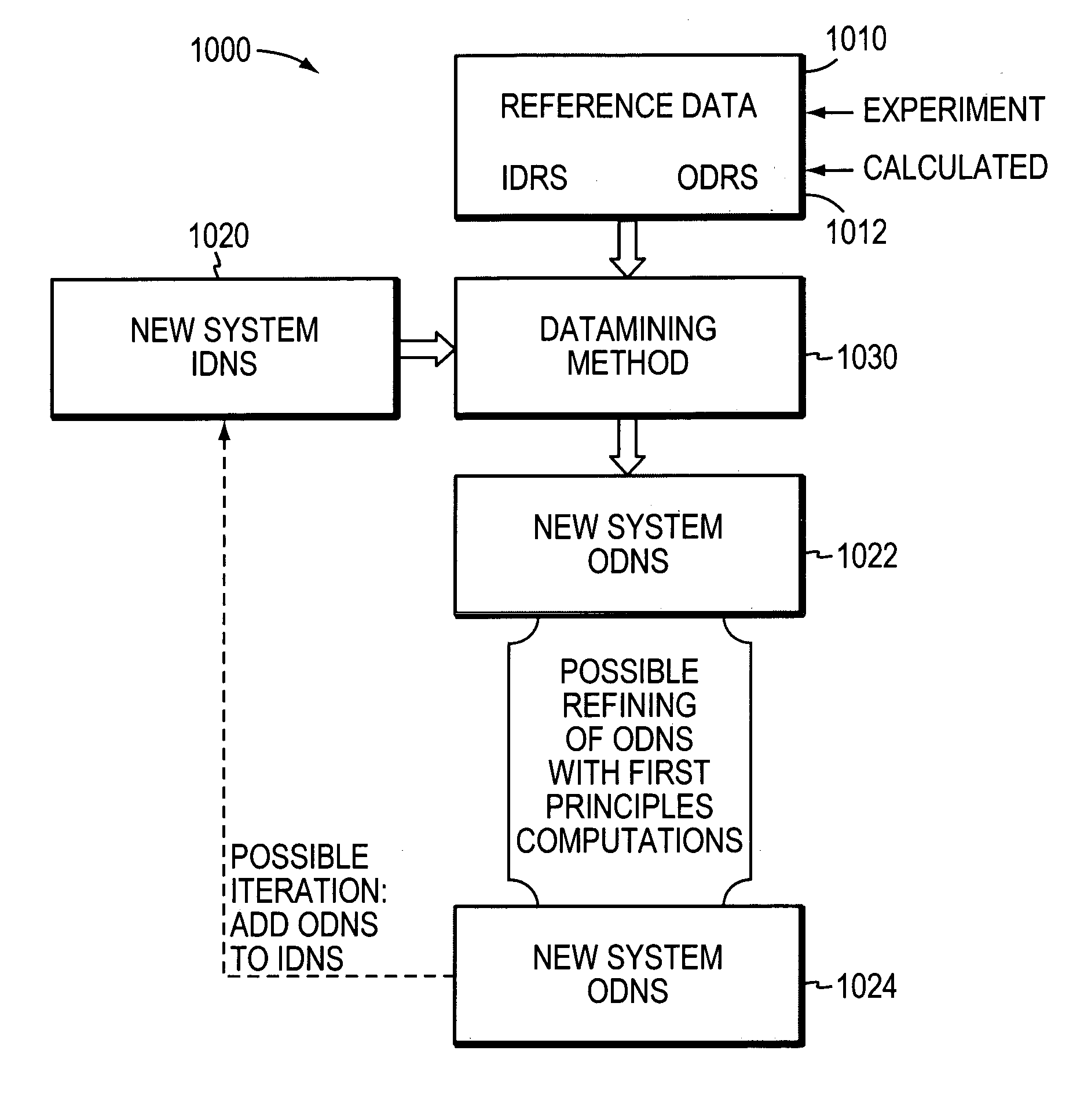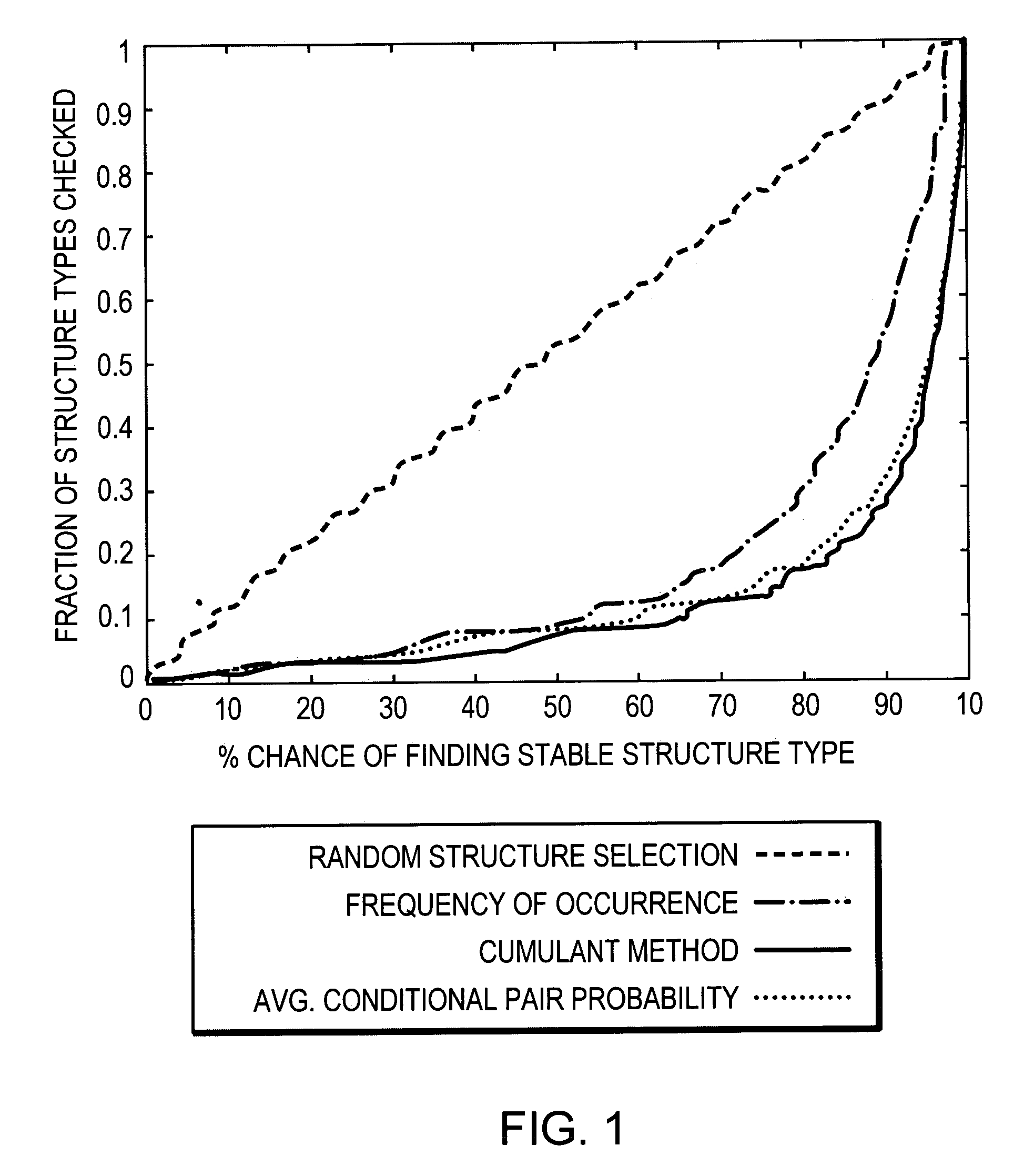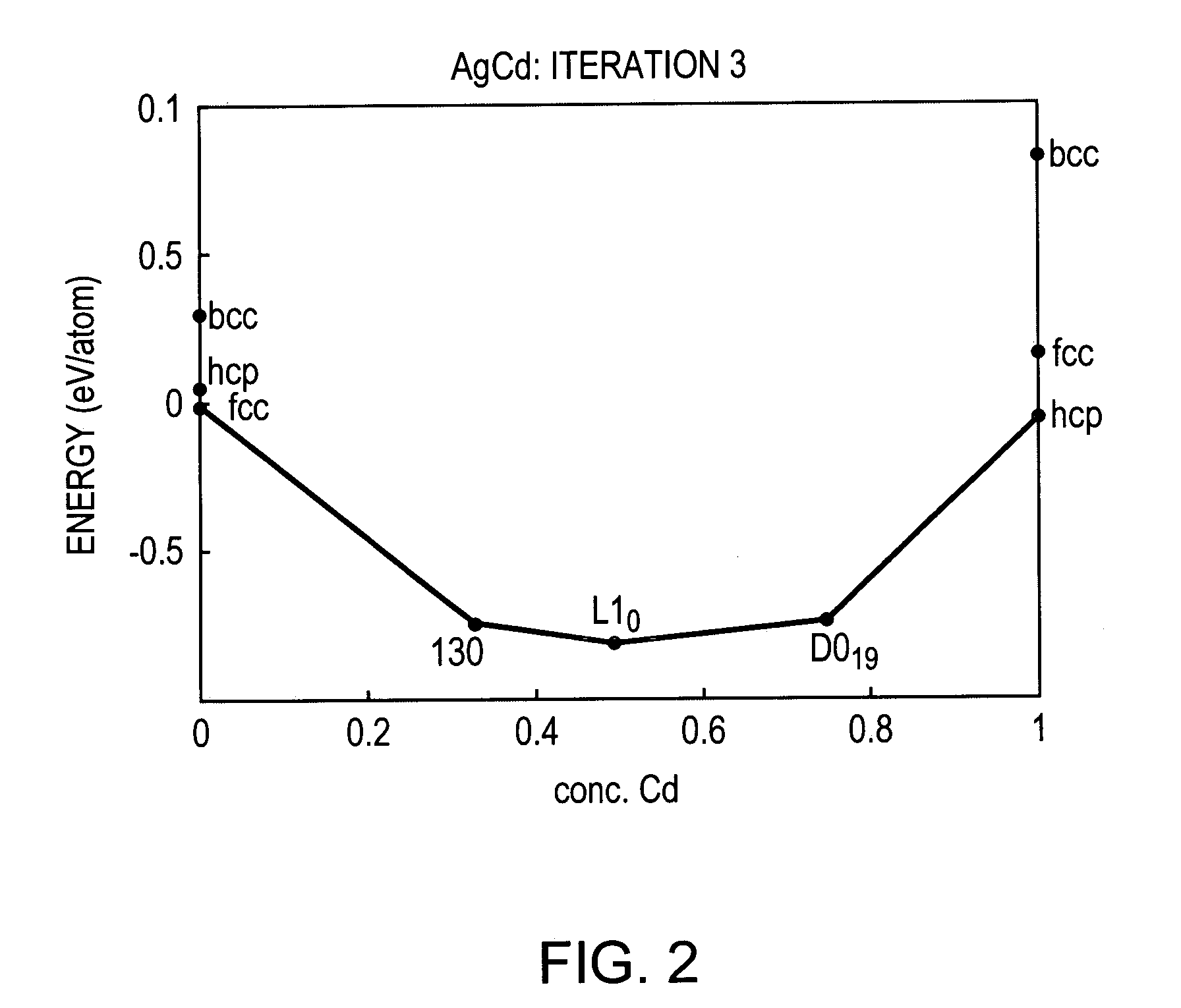Systems and methods for predicting materials properties
a technology of materials and systems, applied in chemical machine learning, instruments, nuclear elements, etc., can solve the problems of limiting the usefulness of material data in predicting unknown properties, difficult and time-consuming calculations in ab, and not making use of the wealth of computed and measured information obtained on materials. achieve the effect of optimal predictive power
- Summary
- Abstract
- Description
- Claims
- Application Information
AI Technical Summary
Benefits of technology
Problems solved by technology
Method used
Image
Examples
example 1
Predicting Structure Based Solely On First Principles Data
[0120]In this example, the IDRS and the ODRS represent calculated energies of structures at various compositions in a series of binary alloy systems. One can define at least one IDNS as the energy of at least one structure in a new alloy. For this example, the ODNS is calculated and includes a set of energies of all structures in the new alloy system. In such an embodiment, iteration is possible, since ODRS is a subset of IDRS.
example 2
Predicting Structures in a New System Based on the Knowledge That Some Structures are Present, and Given an Experimental Database of Stable Structures
[0121]In this embodiment, the IDRS and the ODRS represent a set of stable structures as a function of composition for all materials in the experimental database. In this example, the IDNS represents one or more known stable structures in a new system (e.g., a system that is of interest, or that is the subject of a technical investigation). The ODNS represents one or more candidate stable structures in the new system. Iteration is possible in this case in many ways. In one embodiment, one can use an “Expectation Maximization” algorithm wherein the calculated distribution is used to update the input data and the computation is iterated until convergence to within a desired error amount occurs. In another embodiment, one can use first principles computations to calculate one or more likely structures and add the result to the IDNS.
example 3
Predicting Melting Temperature from the Cohesive Energy of an Alloy
[0122]In this example, the IDRS represents at least one cohesive energy of at least one structure. In some embodiments, the IDRS includes a plurality of data for a series of structures. In this embodiment, the ODRS represents one or more melting points, one melting point corresponding to each structure in the IDRS. In this embodiment, the IDNS represents a cohesive energy of a new structure, and the ODNS represents a predicted melting point of the new structure. Because the information represented by the inputs (IDRS and IDNS) are not the same type of information as the outputs (ODRS and ODNS), that is, a cohesive energy and a melting point do not represent values for the same thing, no iteration is possible in this case. However, as more data appears in the IDRS and ODRS, e.g., new calculated information for a previously unknown structure is obtained, and is added to the IDRS and ODRS so as to augment the previous d...
PUM
| Property | Measurement | Unit |
|---|---|---|
| temperature | aaaaa | aaaaa |
| structure | aaaaa | aaaaa |
| charge density | aaaaa | aaaaa |
Abstract
Description
Claims
Application Information
 Login to View More
Login to View More - R&D
- Intellectual Property
- Life Sciences
- Materials
- Tech Scout
- Unparalleled Data Quality
- Higher Quality Content
- 60% Fewer Hallucinations
Browse by: Latest US Patents, China's latest patents, Technical Efficacy Thesaurus, Application Domain, Technology Topic, Popular Technical Reports.
© 2025 PatSnap. All rights reserved.Legal|Privacy policy|Modern Slavery Act Transparency Statement|Sitemap|About US| Contact US: help@patsnap.com



